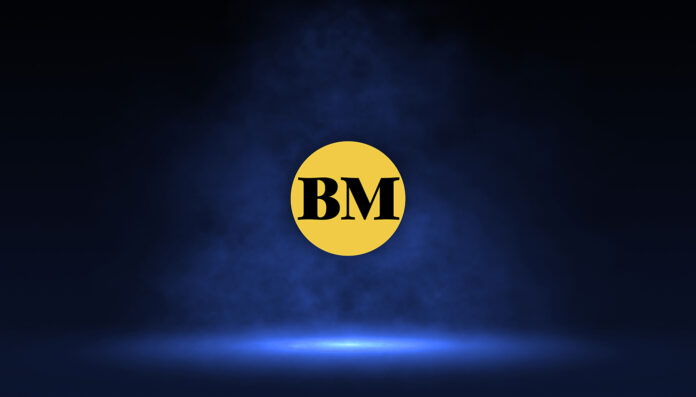
ON February 5, 2021, officials of the Department of Environment and Natural Resources (DENR) trooped to a four-hectare open dumpsite in Santa Ana, Pampanga, operated by the local government unit (LGU).
Tasked by Department of Environment and Natural Resources (DENR) Secretary Roy A. Cimatu to shut down all the country’s remaining open dumps by the end of March this year, DENR Undersecretary for Solid Waste Management and Local Government Units Concerns Benny D. Antiporda unmasked the open dumpsite masquerading as a recycling facility.
The Santa Ana dumpsite is just one of the more than 200 open dumps all over the country that must be closed as mandated by Republic Act 9003 or the Ecological Solid Waste Management Act of 2000, a two-decade-old law that remains poorly implemented on many fronts.
By the DENR’s own account, the country needs to open at least 300 engineered sanitary landfills, or convert at least some of the open dumps into sanitary landfills to sufficiently cover the disposal of the huge volume of garbage the country produces every day.
Huge garbage producer
WITH a population of over 100 million, the Philippines is undeniably one of the huge garbage producers in the world with an estimated 21 million metric tons of garbage being produced every day, according to the National Solid Waste Management Commission (NSWMC).
To ease the LGUs’ burden of shouldering alone the establishment of their own sanitary landfills, the DENR is promoting the clustering of small municipalities to have a common sanitary landfill.
According to the NSWMC, in Luzon alone, the requirement is for an additional 140 sanitary landfills to serve a total of 772 LGUs. For the Visayas, 32 sanitary landfills more are needed to serve 408 LGUs; while for Mindanao, 337 LGUs would require the establishment of 34 additional sanitary landfills.
No-burn WTE technologies
WHILE incineration is prohibited under the Clean Air Act, the law’s implementing rules and regulations (IRR), specifically Rule 28, allows non-burn technologies or its application in waste-to-energy (WTE) method.
“With due concern on the effects of climate change, the bureau shall promote the use of state-of-the-art, environmentally sound and safe thermal and non-burn technologies for the handling, treatment, thermal destruction, utilization and disposal of sorted, un-recycled, un-composted, biomedical and hazardous wastes,” it stated.
The IRR defines non-burn technologies as technologies used for the destruction, decomposition or conversion of wastes other than through the use of combustion, with conditions.
Desperate times, desperate measures
IN January, Marinduque Rep. and House Speaker Lord Allan Jay Velasco urged the Senate to pass the bill allowing the use of WTE technologies to help solve the country’s perennial garbage problem.
Quoted in a Philippine News Agency (PNA) report, he said it is high time for the government to consider the adoption of WTE technologies in the treatment and disposal of solid waste, as many of the landfills in the country will soon be filled up.
On November 24, 2020, the House of Representatives approved on third and final reading House Bill (HB) 7829, or the proposed Waste Treatment Technology Act.
The measure was co-authored by close to 200 lawmakers, including Velasco.
In the Senate’s version of the bill sponsored by Senator Sherwin Gatchalian, which is currently pending for second reading, any WTE technology, including incineration, is allowed as it seeks to amend Republic Act 8749 or the Clean Air Act of 1999 by repealing Section 20 which prohibits incineration.
Burning issue
PUTTING up WTE facilities that use incineration to burn garbage and produce power at the same time has been offered as a win-win solution to the country’s growing garbage problem.
But existing laws prohibit the operation of WTE facilities, particularly those that use incineration that emits toxic fumes—Republic Act 9003, which promotes waste segregation, and Republic Act 8749, or the Philippine Clean Air Act, which bans the use of incinerators.
Citing these proposed measures, nongovernment organizations and environmental groups maintain their stiff opposition to the use of incineration to address the garbage problem, and insist on the so-called 3Rs—reduced, reuse and recycle—and follow RA 9003 to the letter.
‘Dirtiest, most expensive waste disposal system’
WASTE and pollution watchdog EcoWaste Coalition, a member of the Global Alliance for Incinerator Alternatives (GAIA), supports the move to shut down the remaining open and controlled dumpsites in the country.
Sadly, EcoWaste said 21 years after the law took effect, the country is still swarming with open and controlled dumpsites, a clear violation of RA 9003.
The group also backs moves to promote compliance with waste prevention and reduction regulations enshrined in the law, and has condemned the passage of House Bill 7829 by the House of Representatives, saying it will allow waste incineration regardless of the potential harm to health and the environment.
“We condemn the action of our [congressional] representatives in railroading during this Covid-19 pandemic a legislation that promotes the use of garbage incinerators. In doing so, the legislators also ‘ambushed’ two of the country’s key environmental laws—the Ecological Solid Waste Management Act and Philippine Clean Air,” Aileen Lucero, national coordinator of EcoWaste Coalition, said.
Lucero said incineration is the dirtiest and most expensive way to manage solid waste.
“These facilities release huge amount of toxins into the air and environment. Incinerators will be an additional burden to the Filipinos and to the already struggling public-health sector,” she said.
Lucero maintains that existing laws such as the Clean Air Act and Solid Waste Management Act provide clear frameworks on how solid waste can be ecologically managed.
“All we need to do is to implement these laws. Allowing incinerators will bring us back to the highly polluting solid waste management practices.” At the end of the day, she added, it’s the taxpayers “who will shoulder the high costs of operating incinerator plants.”
Future of WTE
ACCORDING to Antiporda, unless a new law is enacted amending the anti-waste incineration laws, or at least the provisions that prevent the government from pursuing incineration projects, WTE is facing a “bleak future” in the Philippines.
“The law itself, if you look at it, it’s a little dangerous. There’s a thin line on legality issues. RA 9003 says we need to segregate. This means, we have to take out the highly combustible materials, which is the plastic,” he said.
However, Antiporda explained that a dilemma in removing plastics is that the remaining waste, when burned, may not be able to generate enough heat to prevent the emission of toxic fumes, which means a potential violation of the Clean Air Act.
“If we burn plastic along with other waste, then we are violating RA 9003,” he said.
Plastic as fuel
ACCORDING to Antiporda, unless plastic is declared in the law as fuel, thereby allowing its burning with other garbage altogether, WTE will have no future in the Philippines.
This, he said, will allow the use of incinerators to dispose of garbage and produce energy at the same time.
But Antiporda said with or without WTE, or the law that will allow waste incineration, the DENR is determined to address the garbage problem without compromising air quality or cause further environmental woes.
“We will continue our honest-to-goodness campaign against open dumpsites. Sanitary landfills will be encouraged but not for the garbage there to stay forever, but to serve as feedstock storage, for future technology that will solve the waste problem,” he said.
Read full article on BusinessMirror

